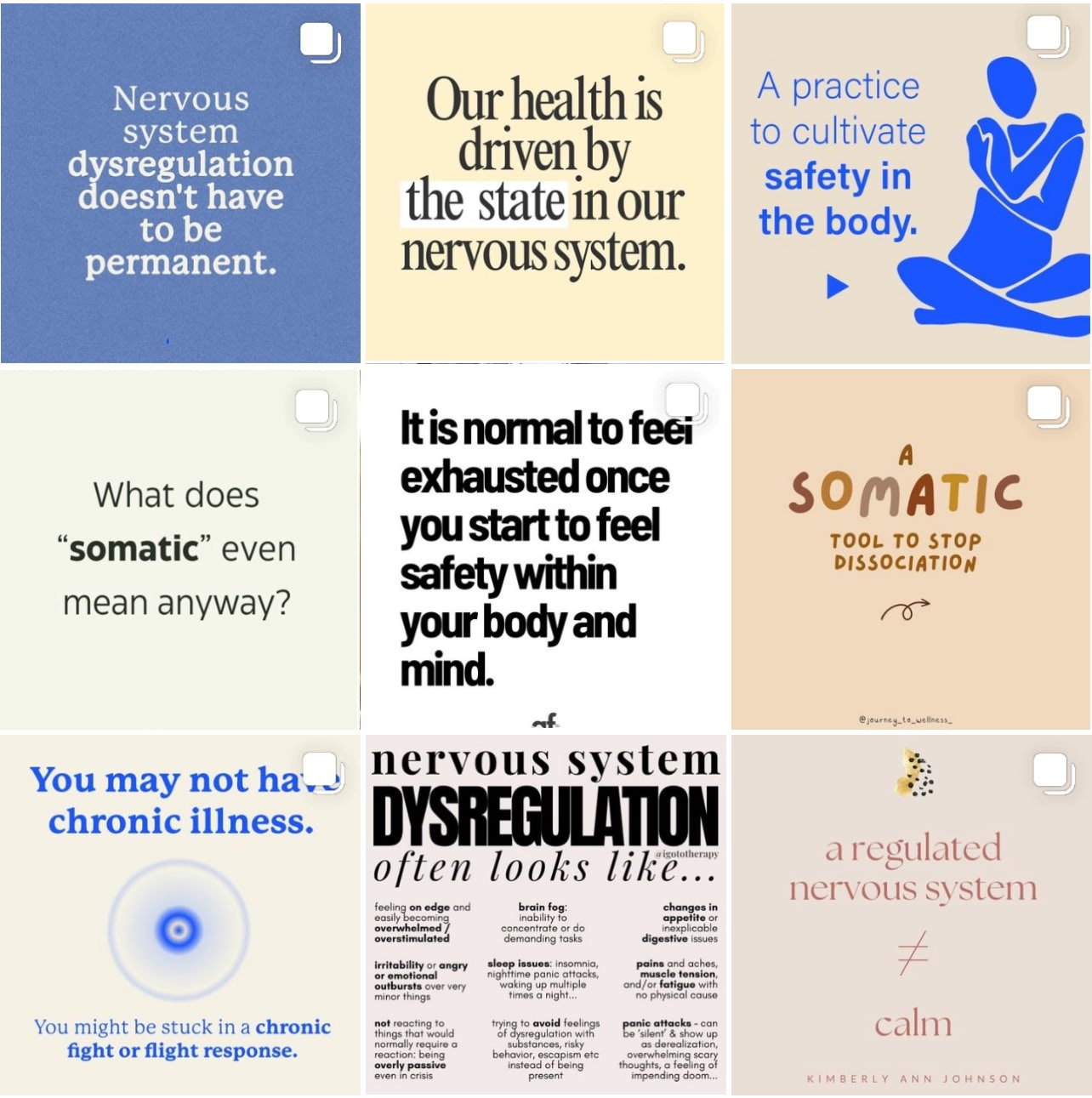The body keeps the score (but there’s a lot more going on)
“Until you work with your parts, they will cause you stress and you’ll blame your nervous system.”
Imaginary Carl Jung summarizing this newsletter post
A quick scroll through mental health social media will lead to A LOT of content on “nervous system resets,” “somatic self-care,” “vagal nerve calming,” and so on. It makes sense! It can be a revelation that our mental/emotional distress is not all in the mind, that what’s happening in our “heads” is just a piece of the puzzle.
This is almost surely why The Body Keeps the Score became a huge bestseller, having sold over 3 million copies and translated into 37 languages. Written by Bessel van der Kolk, MD, a psychiatrist who specialized in emotional trauma decades before social media was invented, the book is a summary of his life’s work. It’s quite a long read with a simple thesis: emotional trauma gets “remembered” deep in the body, unlike other forms of memory.
Since its publication in 2015, somatic-based approaches to mental and emotional health have blossomed. I’m not on Instagram much, but I follow a number of therapists and so when I go to my “Explore” page, it takes me less than a minute to screen shot these:
This is all a good thing, but I can’t help but think that when we focus only or primarily on the body/nervous system/somatic approaches, we put the cart before the horse.
It’s like if we’ve been hearing this horrible, blaring alarm sound for years and someone points out that the sound is coming from a smoke alarm. So we begin to intensely focus on the smoke alarm, finding all different ways to calm it, reset it, or regulate it. And we might hit on some really good techniques that provide some relief . . . but the alarm will eventually go off again.
The only thing that will turn off the alarm for good is to follow the smoke to the fire, and then put out the fire. Focusing only or primarily on the body keeps our attention away from the smoke and fire.
In my personal and professional experience, the body absolutely keeps the score. The body is (as I learned years ago in Authentic Relating training) always “truthing.” It’s an excellent alarm system to show us where/what/who inside is hurt and needs our help. But if we just focus on the body (through breathing, movement, touch, manipulation, and so on), we are doomed to keep coming back to the alarm system to reset it.
We need a method for not just finding and acknowledging the alarm (i.e., coming back into the body); we also need a method for going toward the smoke and fire. Internal Family Systems gives us the perfect set of tools for this.
In IFS, we begin with the smoke (i.e., that irritant that’s upsetting us) and we get curious toward it. Here’s an example of how it works:
Me: “What do you find troubling in your inner system?”
Client: “I’m feeling a lot of anxiety.”
Me: “Where in your body or head do you notice it?”
Client: “It’s in my chest and throat.”
Perfect. We’ve found the smoke (anxiety) and we found the alarm (activation in the chest and throat). But in IFS, this is the very beginning of our journey because we want to find the fire, why it’s burning, how it got started, and then help the parts inside that have been forced into their roles as fire-starters or fire-keepers.
In IFS, we guide clients toward the activated protector parts and let them know that there is a much bigger and deeper force in the system––the True Self––that can take the lead. Eventually these protector parts begin to trust this force, and let the True Self go to the younger, vulnerable, traumatized parts that are the ultimate cause in the system of all the fire, smoke, and alarm ringing.
But if we bypass this by just focusing on the blaring alarm (i.e., the dysregulated nervous system; the body with all the scorekeeping) then we just need to keep coming back, time and again to that blaring alarm. Thankfully, there’s a better way.

